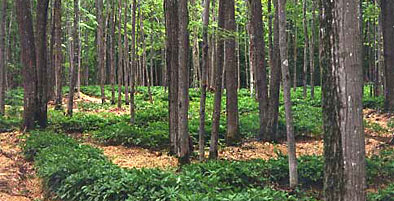Botanical Information
Bloodroot, Sanguinaria canadensis L., is a member of the Papaveraceae family. It is a native spring wildflower that grows in rich woodlands of North America from Nova Scotia to Florida and west to Alabama, Arkansas, Nebraska, and Manitoba. It can grow in full sun but is more often found in semi-shaded, light-wooded areas with moist, acidic soil. A perennial that grows up to 10 inches tall, the plant has a single basal leaf that can be as wide …
